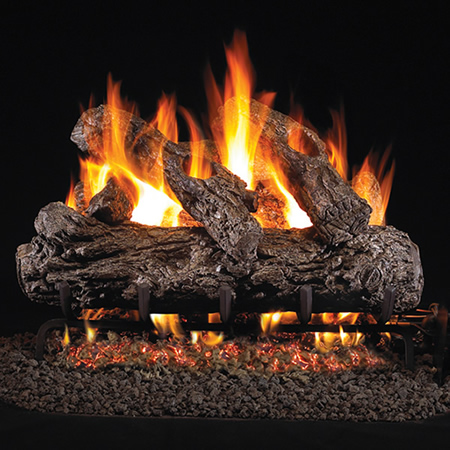 Gas logs provide the wonderful ambiance that only a fire can bring on a cold day. A fireplace is an excellent investment, potentially raising the value of a house by 12%. Gas is the preferred fuel among many busy homeowners, since fires and the heat they give are started instantly. With the incredible innovation in gas fireplace design, it’s smart to consider investing in this appliance. The following provides what you need to know when buying gas logs.
Gas logs provide the wonderful ambiance that only a fire can bring on a cold day. A fireplace is an excellent investment, potentially raising the value of a house by 12%. Gas is the preferred fuel among many busy homeowners, since fires and the heat they give are started instantly. With the incredible innovation in gas fireplace design, it’s smart to consider investing in this appliance. The following provides what you need to know when buying gas logs.
2 kinds of fuel for gas logs
If you are planning to have gas logs installed in your home, the first consideration is the type of fuel to be used. Natural gas and liquid propane are the two options, and they have different pros and cons. No matter which you choose, it’s usually necessary to have the connection of fuel to the gas logs handled by a professional.
Natural Gas
Natural gas is the obvious choice for anyone who already has gas appliances. This is the cheaper of the two fuel options for gas logs. Natural gas is safer because it is lighter than air and dissipates after combustion. One disadvantage of natural gas is that the source is a buried gas line service. In other words, if your home isn’t already using natural gas, it can be a large investment to tap into natural gas service. For many people, however, the problem is that natural gas service isn’t available at all in their area.
Liquid Propane
The biggest advantage of using liquid propane for your gas logs is that it burns almost three times hotter than natural gas. Although it is a more expensive fuel, it can also do a better job of helping you cut heating costs. In areas where natural gas is not available or isn’t already hooked up to appliances, liquid propane can be used. This does usually require, however, that a dedicated propane tank be installed on the exterior of your home. Along with a tank, it is often required to contract with a propane dealer, who will refill it as needed.
2 kinds of gas log fireplaces
Depending on where you live, you may have two choices of gas log fireplaces: Vented gas logs or Ventless gas logs. In some areas, vent-free gas logs are not allowed by law. In California, for instance, some municipalities have made it illegal to use ventless gas logs. If you do have a choice, it’s good to know the pros and cons of both kinds.
Vented Gas Logs
Vented gas logs are usually less expensive than ventless gas fireplaces, though vented sets require a venting system, such as a chimney. This type may work for you if the ambiance of a fireplace is of more importance than heating capacity. A vented gas log set will have much more realistic flames. The amount of heat a vented gas log provides is significantly less than what is provided by a ventless gas fireplace.
Ventless Gas Logs
 No venting system is needed for ventless gas logs. What is required, however, for safety reasons, is an oxygen depletion system (ODS) and a carbon monoxide detector. Less pollution is produced by vent-free gas logs because the fuel burns almost completely.
No venting system is needed for ventless gas logs. What is required, however, for safety reasons, is an oxygen depletion system (ODS) and a carbon monoxide detector. Less pollution is produced by vent-free gas logs because the fuel burns almost completely.
Ventless gas logs create changes in the atmosphere of a home. First, moisture is introduced to the atmosphere because fuel that burns cleanly produces moisture. Secondly, vent-free gas logs deplete the oxygen in the area. When the gas logs burn for a long time, it usually becomes necessary to crack a window. This reduces heating benefits, since the needed air that enters will be cold.
Where to shop for a gas log set
If you’re ready for convenient gas logs in your home, visit FyrePro, which is family-owned and operated. The Reynolds Family has been providing hearth products for Fort Collins CO and the entire area for over 30 years, though FyrePro was officially founded in 2002. For the best in personalized service as you choose the perfect gas log set, visit FyrePro today.
